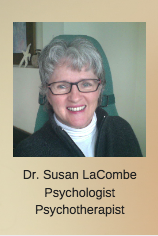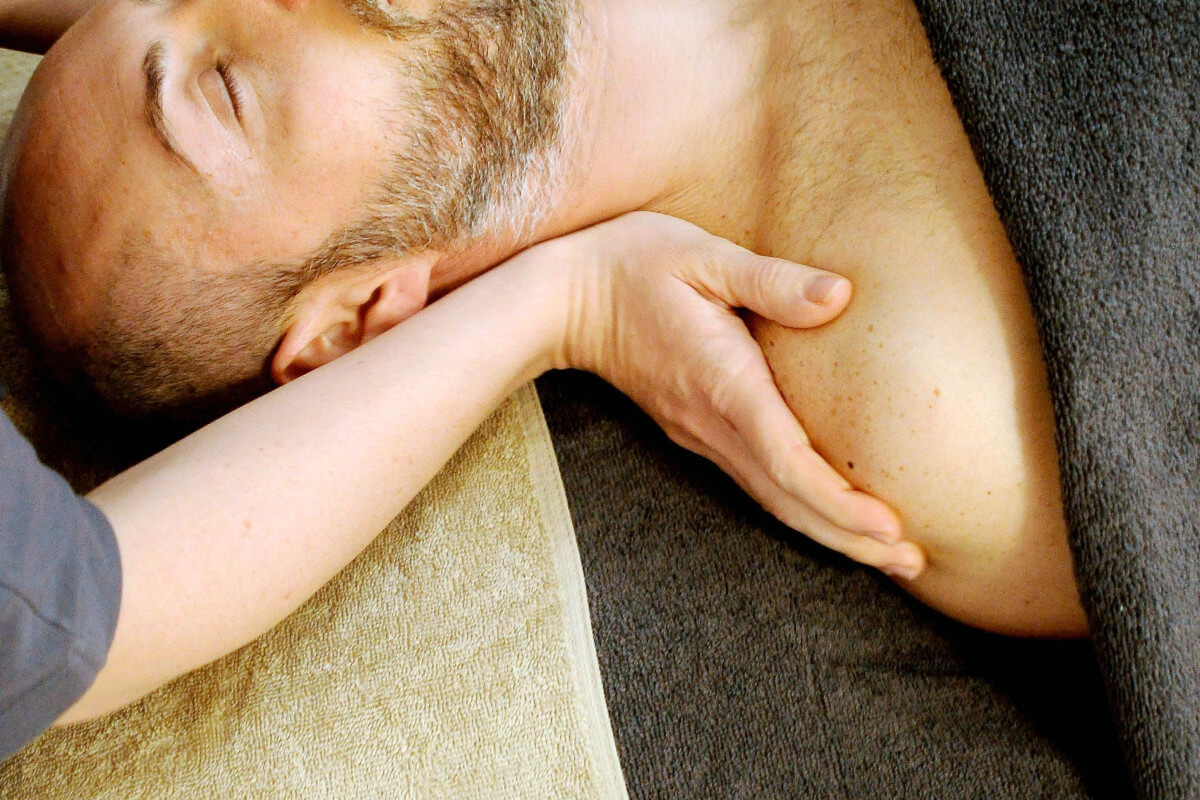Want deeper and more consistent results?
In contrast to traditional forms of bodywork, a holistic approach allows the client to develop a relationship with one's body and a sense of empowerment with its processes.
The end result is that there is less dependency on outside help that often serves to provide only temporary relief.
"As a BetterHelp affiliate, we may receive compensation from BetterHelp if you purchase products or services through our link."

I was healing quickly on my therapeutic journey - getting both somatic based psychotherapy and holistic massage. Every 2-3 weeks I was experiencing noticeable changes.
If you are in regular "talk" therapy or even body-based therapy, I'd encourage you to supplement your efforts with some form of holistic massage or bodywork.
Neuroscience is being applied in many fields (e.g. teaching, psychotherapy, coaching, social work, early childhood education) and it's application to all forms of bodywork is now being implemented by holistic-minded practitioners.
I'm also introducing Erika Moore RMT, who worked with me on this article.
What is "holistic massage"?
"Holistic massage" is a term used in complementary and alternative medicine ("CAM") to describe any therapeutic, healing or personal development work involving touch, physical manipulation or energetic shifting. It includes all forms of massage techniques, as well as other types of touch and healing therapies that aim to enhance awareness of the "mind-body connection".
Any therapy which involves touch or the application of pressure or vibration to tissues of the body can also be termed "bodywork".
"Bodywork" is based on a purely physical and somatic understanding of the human body.

How massage becomes "holistic"
Many massage therapists have had the experience of a client weeping during treatment for reasons that may not be apparent initially. It ordinarily happens when emotions get triggered as certain areas of the body are treated.
The body holds historical information that may not be detectable by traditional assessment methods and often not even available to the clients' own consciousness. That's the mind-body connection in action.
A massage therapist that's trained to understand the mind body connection can help you make sense of where the tears are coming from.

The body is a storehouse of information and with the right guidance you can bring consciousness to patterned behaviours (e.g. chronically tight shoulders, torqued hips, tension headaches).
You see, each of these physical ailments has an emotional story to tell.
How many times have you been seen by a professional bodyworker (i.e. a massage therapist, chiropractor etc) for a tight neck only to have it return once you're out the door? A therapist that works in a holistic fashion will help you to explore and possibly connect with the root cause.
"The body is the place that memories call home."
Deepak Chopra
Working from a holistic, integrative perspective, the body is viewed as a reflection of the whole person and of all lived experiences.
The body is the "home" of emotions (including the non-conscious dynamics), belief systems and spiritual expression.

Many health care professionals have intuited this early on in their work and thankfully, we now have the science to better appreciate the mind body connection.
Being "holistically informed" directs the treatment. The therapist does not limit his or her interest to the state of the body but also the joys and challenges that are going on in the client's life.
This let's the therapist know what resources the client has, as well as, any ongoing stressors that may impede the healing process. They in effect, direct the way the treatment unfolds.
In this case, the therapist invites treatment intention by asking: "If you and I were successful what would change for you?"
She begins a dialogue of inquiry that touches on many aspects of her client's life. The answer to her questions informs where the client might be starting and the expectations held.
Take this example...
When we were writing this article, Erika referred to hip pain that would periodically arise from out of nowhere. She attempted to relieve the pain through stretching, physical therapy and movement practices like yoga.
A cycle of healing and repair went on for years. Despite that she had an excellent physical therapist and was motivated to reduce the pain, her hip would go out without warning. In other words, her hip would go into contraction outside of her awareness.
Nonetheless, it wasn't until she began to increase her capacity for awareness did the pattern became evident. She did so through body psychotherapy.
With each step towards greater awareness, the breadth of the holding pattern became evident. She discovered that whenever she was approached around her head by a dentist, a healthcare worker or even her hairdresser, it triggered a contraction in her hip. She'd find herself sitting only on her right hip. It was an ancient pattern.
And once she became aware of the pattern and was not afraid of the discharge, her yoga practice became a tool for healing. Without this awareness her previous experience of yoga did not have the same impact.
Until she was ready to have this awareness she had to rely on outside help to deal with the contraction and subsequent tissue and nerve pain...until her next visit to the hairdresser, the dentist or when she became anxious.
Only with a wider awareness to the pattern was she able to interrupt it.
You see, it was initially too painful to have that awareness. She needed to learn how to titrate and shift body states, how to access resources, how to contain and tolerate high states of arousal and how to discharge. These enabled her to move through the underlying physiological responses of fight/flight/freeze that were holding the pattern in place.
Through her therapy she was able to recognize the pattern and identify how an early surgery played out the pain tension cycle in her body. The trauma of a long ago surgery had ramifications that were being felt today.
Now she says she can sit at the dentist or hairdresser and can release it immediately the moment it starts.
Limitations of the Western medicine model
The essential initial task is for the therapist to meet the client where he or she is at. Many clients approach physical problems from a Western medicine perspective, one of symptom reduction and specialization. In western cultures much of the healthcare system is organized this way.
Here's what I mean.
Working with a client the therapist concludes from several of her client's responses that there is a strong belief in a Western medicine approach: In essence, it's as if the client is saying, "I want you to fix my shoulder".
In this case, the client might also be saying that her belief is that the body can be manipulated in such a way that healing is automatic.
Therapies that focus solely on the physical aspect of treatment - to the exclusion of the whole psychophysiological dimension - might approach the client with "In six weeks you can expect your shoulder to be better."
Indeed, sometimes focusing on the physical manifestation is sufficient for the healing process to take place. The client feels met and no paradigm shift in approaching treatment is needed.
Yes, sometimes we can get away with it this minimal intervention. There may be enough resiliency in the muscular skeletal system to absorb it. In these cases, the repair process is a "textbook case" and the outcome is predictable.
Nonetheless, the imprint of the event in the nervous system is still there and unless it is addressed (i.e. made conscious) the patterning can make the individual vulnerable to other stressors.
For instance, looking a little deeper we might find a nearly undetectable apprehension that is showing up as body tension.
Or, perhaps there is a withdrawing of attention to injured body areas or a hypervigilance. These adaptive processes are initially helpful yet if left untreated put extra pressure on the overall system.
In many cases, a wider view offers a more complete resolution of the problem. Take the example of a client who has had a series of injuries to the left side of his body.
One approach, takes each injury in turn and repairs the soft tissue and/or muscle groups involved. A wider, holistic approach begins the inquiry of what might be at the root of his vulnerability for the left side.
It's a holistic, integrative approach where a therapist might refer her clients to psychotherapy, mindfulness practices, naturopathy or kinesiology, nutrition counseling, whichever seems appropriate.
I regularly refer my clients to massage therapy because it is an excellent complement to psychotherapy. And, it's my experience that those clients who have bodywork progress in their therapy at a rate faster than other clients.1
The mind body connection
What happens in the body reverberates almost instantaneously in the brain. For instance, as the bodywork reduces tension in the body, it calms the mind.
I've certainly seen this happen over and over in my work with Self-Regulation Therapy, a body-based approach. Intense, stressful thoughts diminish as the body settles down. (Which explains the popularity of yoga, tai chi and other mind-body regimens.)
Most people think it's the other way around. They assume that the tension in their body is the result of their thoughts. And, yes, to some extent this is possible, but based on the way the nervous system operates, the reverse is more likely.
That's because most of our behaviour, our thoughts and our emotions arise from "bottom-up" (i.e. they originate in the body). You see, there are more one-way neuropathic connections going up from the body to the brain than there are going from the brain down into the body.
The body shapes our thoughts
For example, if I'm ruminating about meeting my boss later today, my thoughts might be racing and repetitive. I can't shake them off. I take a break at my lunch hour and go to my massage therapy appointment. Upon my return and facing the meeting I was dreading, my thoughts are no longer plaguing me.
I'm still apprehensive but far less so - my thoughts are more realistic and less fear-based even though the intended meeting is now closer at hand.
The energy charge in my body was influencing my thoughts. Reducing that charge positively changed my perception of the situation.
From a psycho-physiological perspective, the pattern of increasing tension has been interrupted. This is new learning by my nervous system.
Therapy for your body
A specialized massage therapist slows the process down so you can identify and recognize patterns that are being triggered in your body. In doing so, emotional connections become apparent. This specialized bodywork invites your participation.
As such, your awareness increases.
This is where your psychotherapy is helpful. Emotional material that is now available to you can be processed by your talk therapist at a deeper level.
Did you know!
In fact, the process of interrupting high levels of activation and bringing the nervous system into balance, when done repeatedly, is one the basic techniques for body psychotherapy. And, over the course of several sessions, it has the effect of reducing the overall level of activation.
In other words, your threshold for being hyped up has now been raised. It takes more to get you wired. Overall, you're calmer in your daily life.
And there's more...
There is every reason to believe--based on what neuroscience has discovered about the nervous system--that this effect also operates in the opposite direction. That is, as we work through emotional roadblocks, the functioning of our body improves. (In fact, there's a growing body of evidence to show that this does indeed occur.)
This suggests bodywork therapy can be a tremendous support as we move through our emotional material in psychotherapy.
But bodywork also includes those activities that might entail shifting body states consciously. For example, I am doing bodywork when I shift myself from an elevated heart rate and shallow breathing to a place of collected calm.
These body-based practices share some common characteristics, such as the principles that the human body is self-regulating and has the ability to heal itself, and that the parts of the human body are totally interdependent.
Choosing your Massage Therapist or Bodyworker
Like counselors and psychotherapists, not all bodyworkers are the same. And, just as in choosing a psychotherapist, you'll want to find a bodyworker who is "attuned" to you. An "attuned" bodyworker is sensitive to your level of activation. He or she knows how much pressure to place on your body, and where.
Let me explain.
An attuned massage therapist invites feedback from you and your body. What can be experienced as soothing at one time in one area of the body, could be aggravating at another time. For instance, too much pressure applied on individuals with high activation may easily set them up for increased agitation later.
As the therapist becomes familiar with characteristic expressions of your present state, she watches for shifts in breathing patterns and body movements. These shifts are often outside your awareness. Yet, with her guidance, she can help you to recognize them.
So, she might say, "what are you noticing right now?" Or, "how is this for you?" It's an opening for a dialogue. This information dictates the unfolding of the therapeutic session.
In time, you become familiar with your body and it's patterns. You:
- Develop tolerance for different states;
- Learn to interrupt pain patterns;
- Learn the body's pain signals earlier so you can address when it's easier;
- Become familiar with triggers;
You develop a strong relationship with your body. This might allow you:
- To avoid getting sick by overworking your body.
- To start to delight in the physicality of joy and contentment.
Essentially, you begin to know your body.
Notes
1 As far as I know, there's no research in this area being done. Can I say that this is a general conclusion? No. You should understand that my finding is anecdotal only. I've done no measuring or testing to verify this. I couldn't even say this effect is due to body work as I generally refer my clients to the same body worker. Erika's ability to make good connections with her clients and her level of skill is a significant contributing factor.
For a deeper understanding of how a bodyworker might approach her work from the mind-body perspective, visit the webpage of massage therapist, Erika Moore RMT.
Related Topics
Holistic therapy matters to your health
Feeling tense all the time
Natural remedy for anxiety

